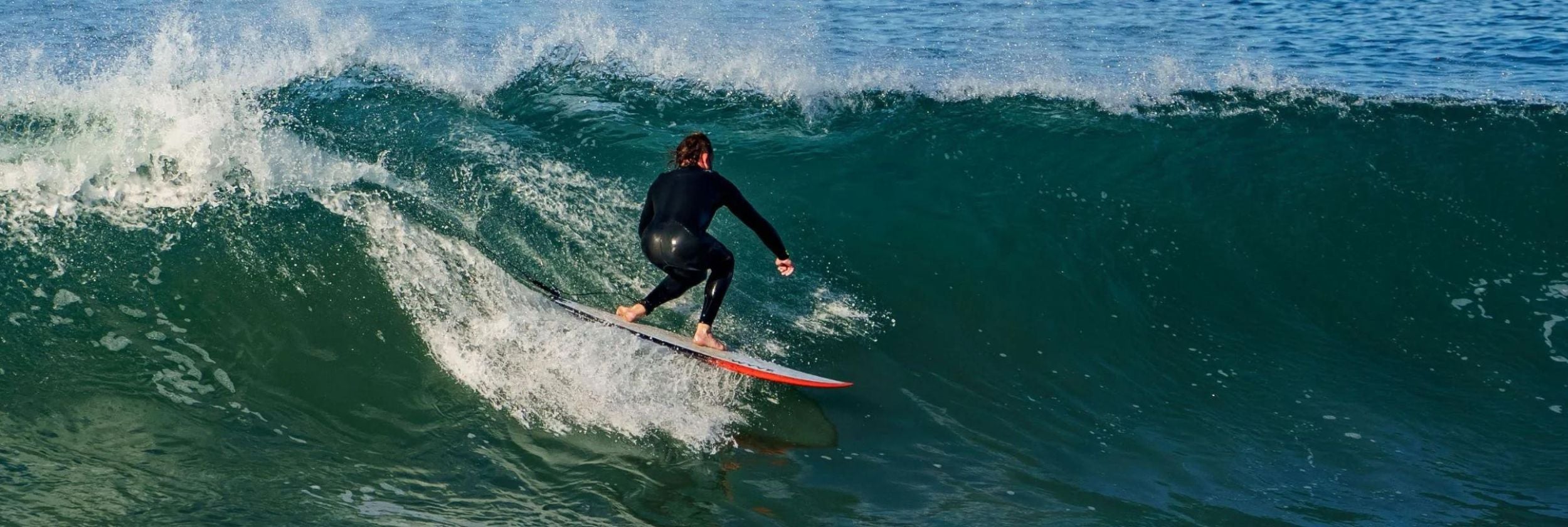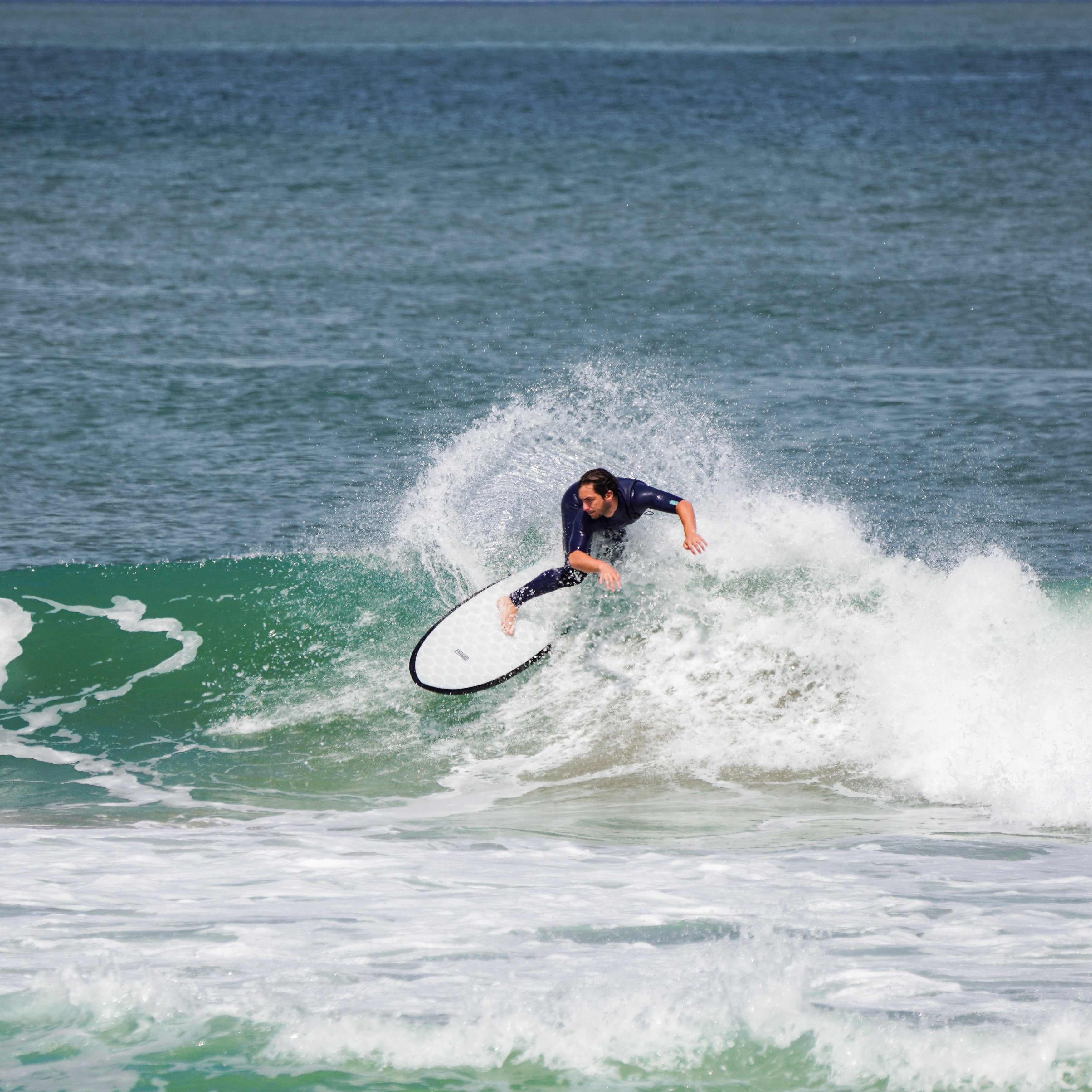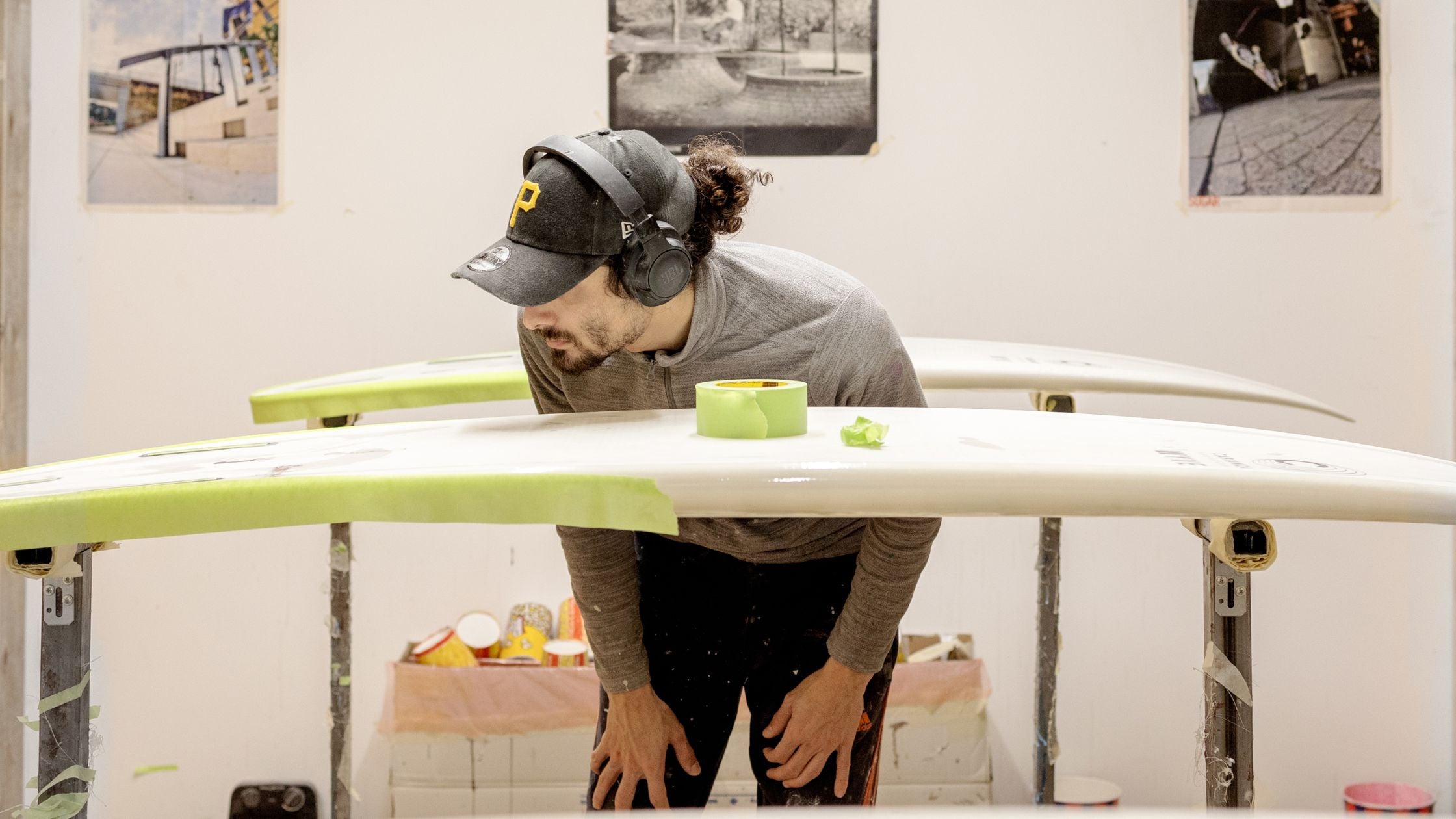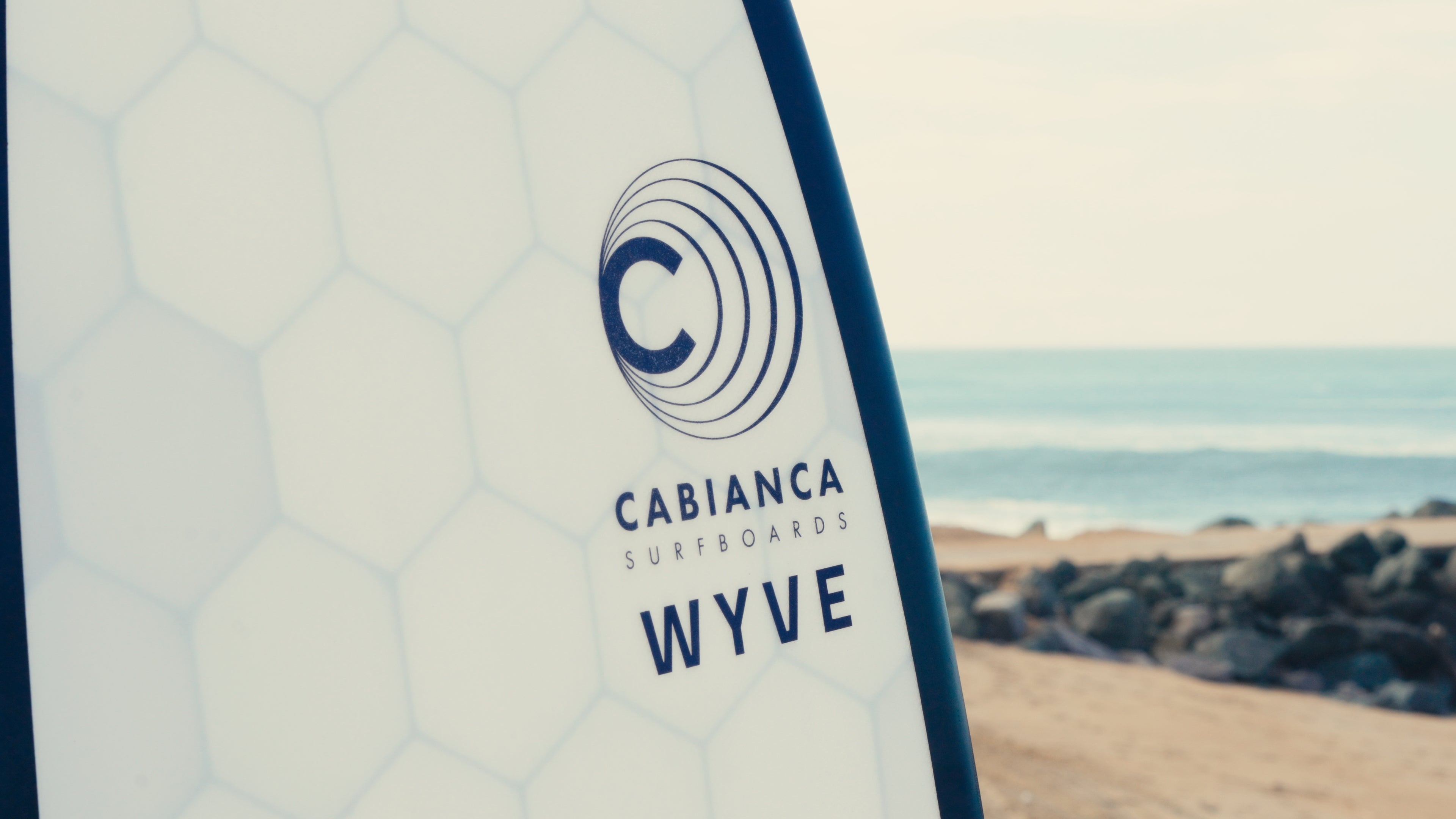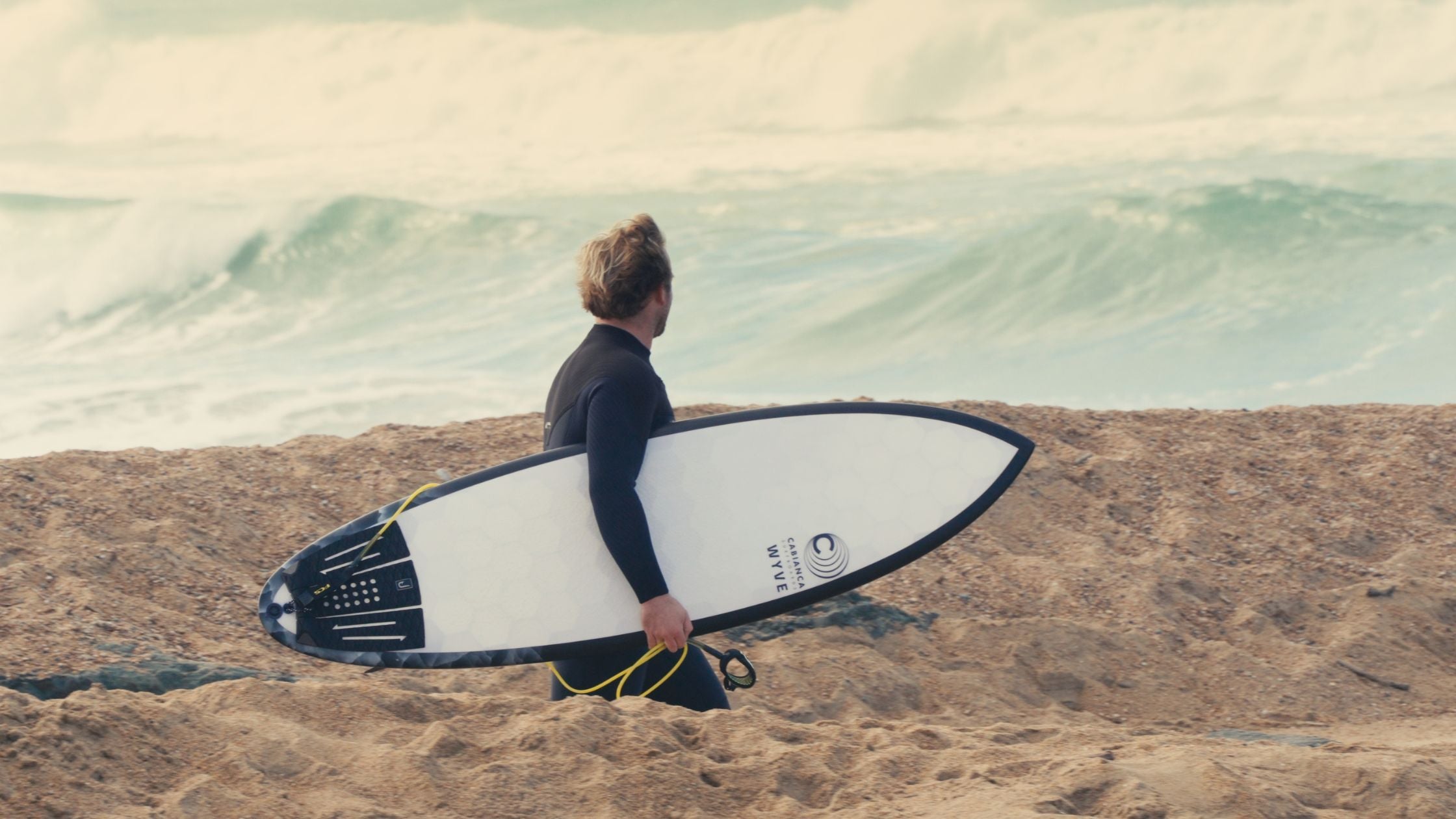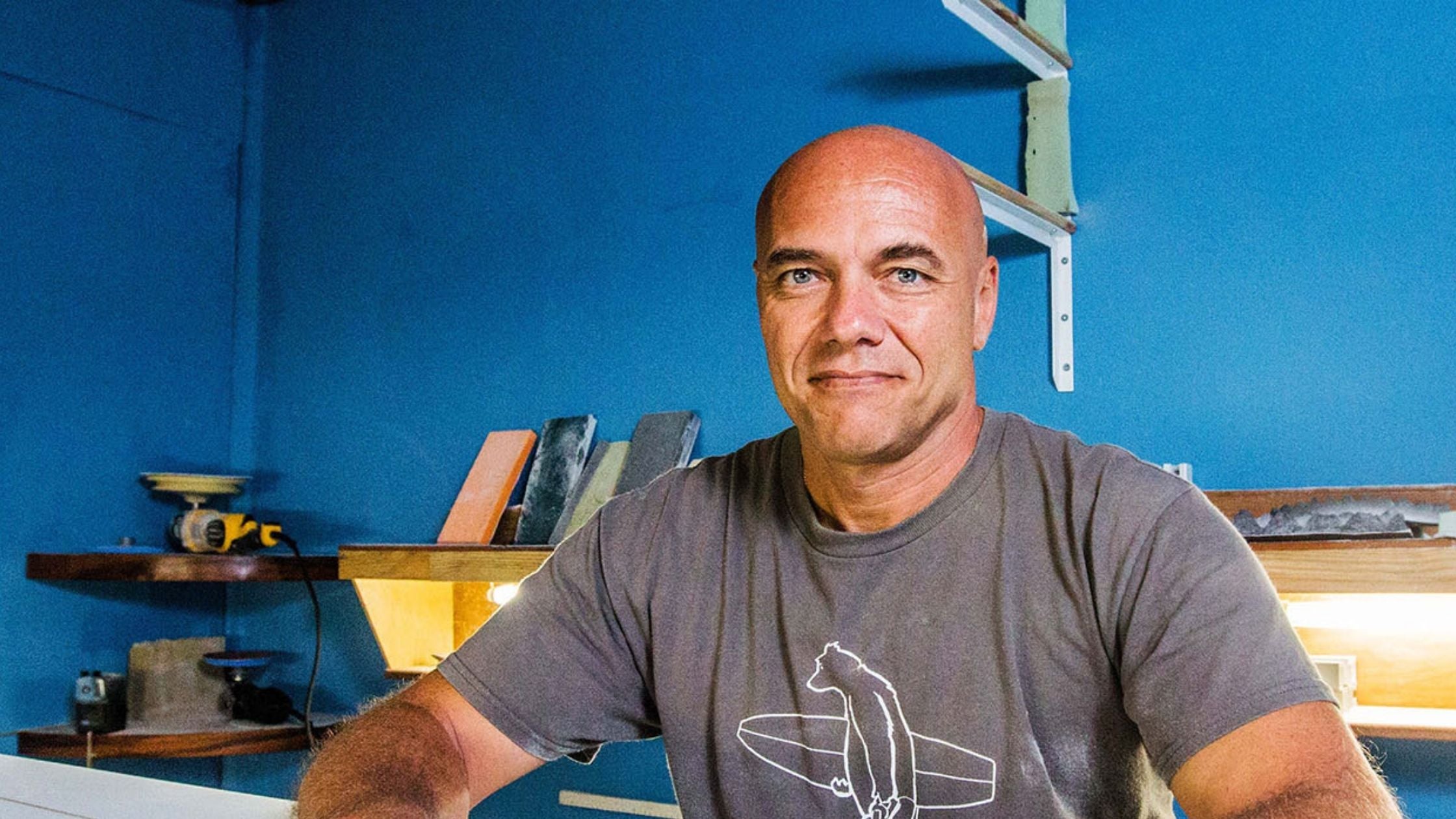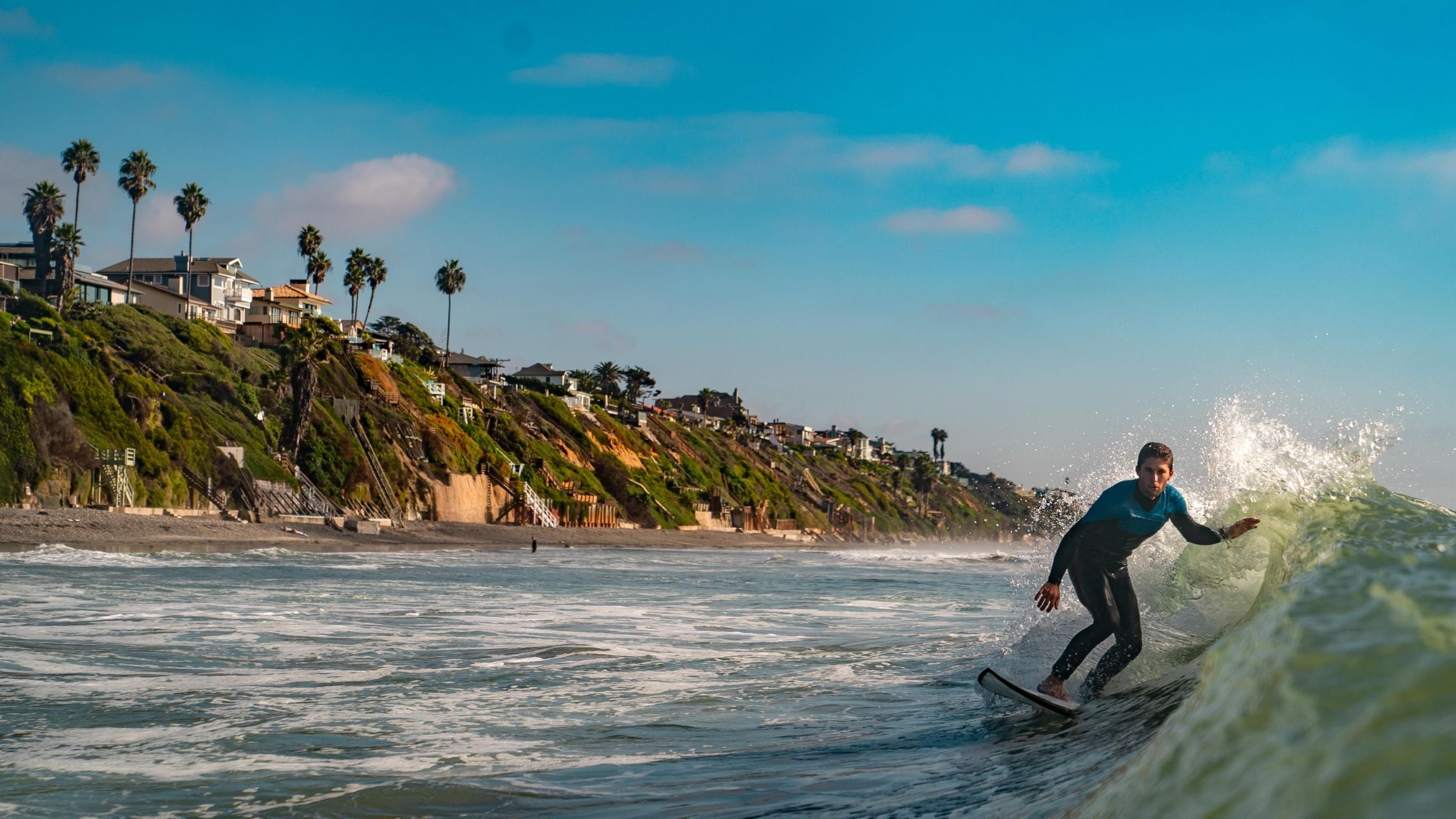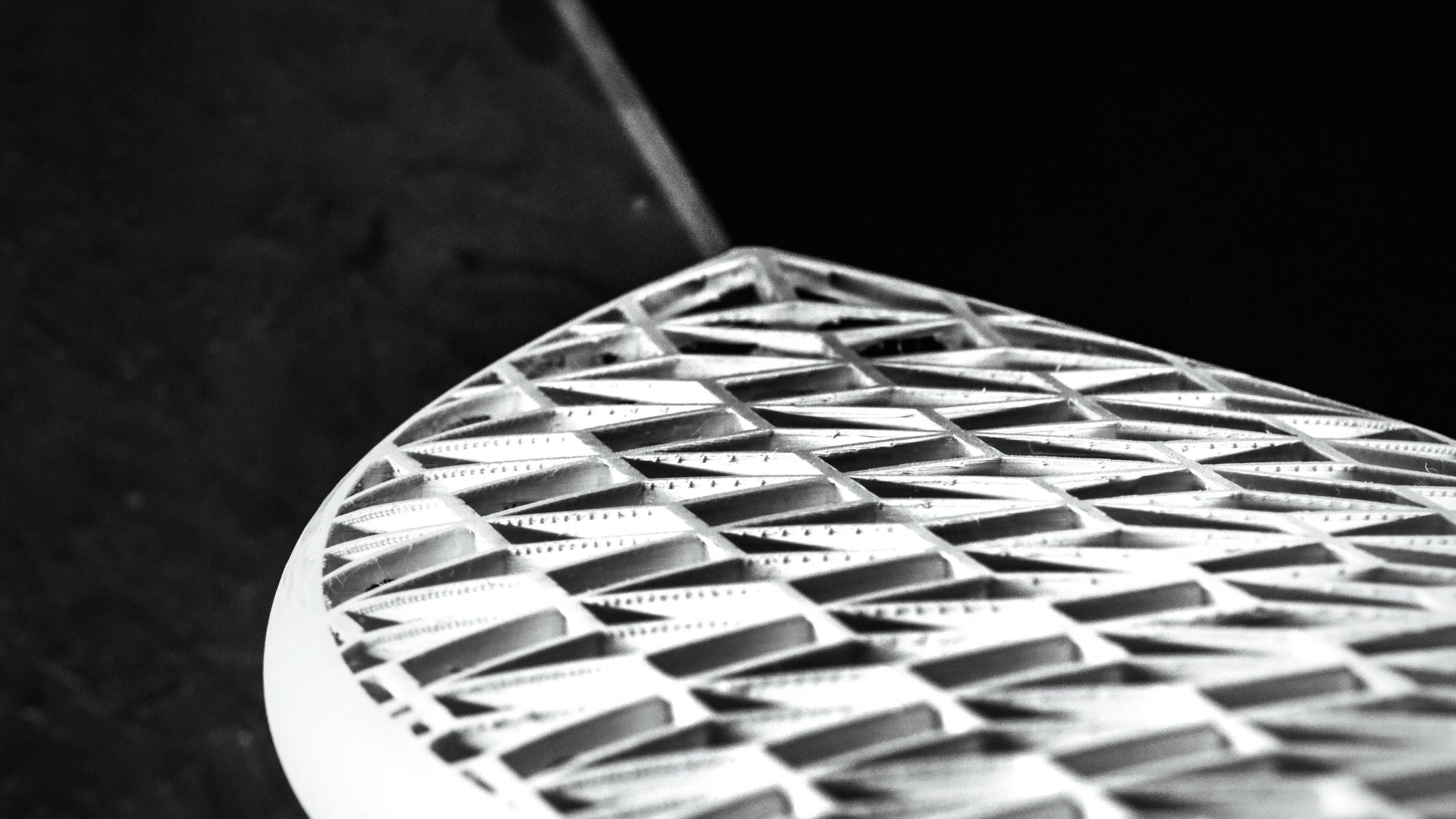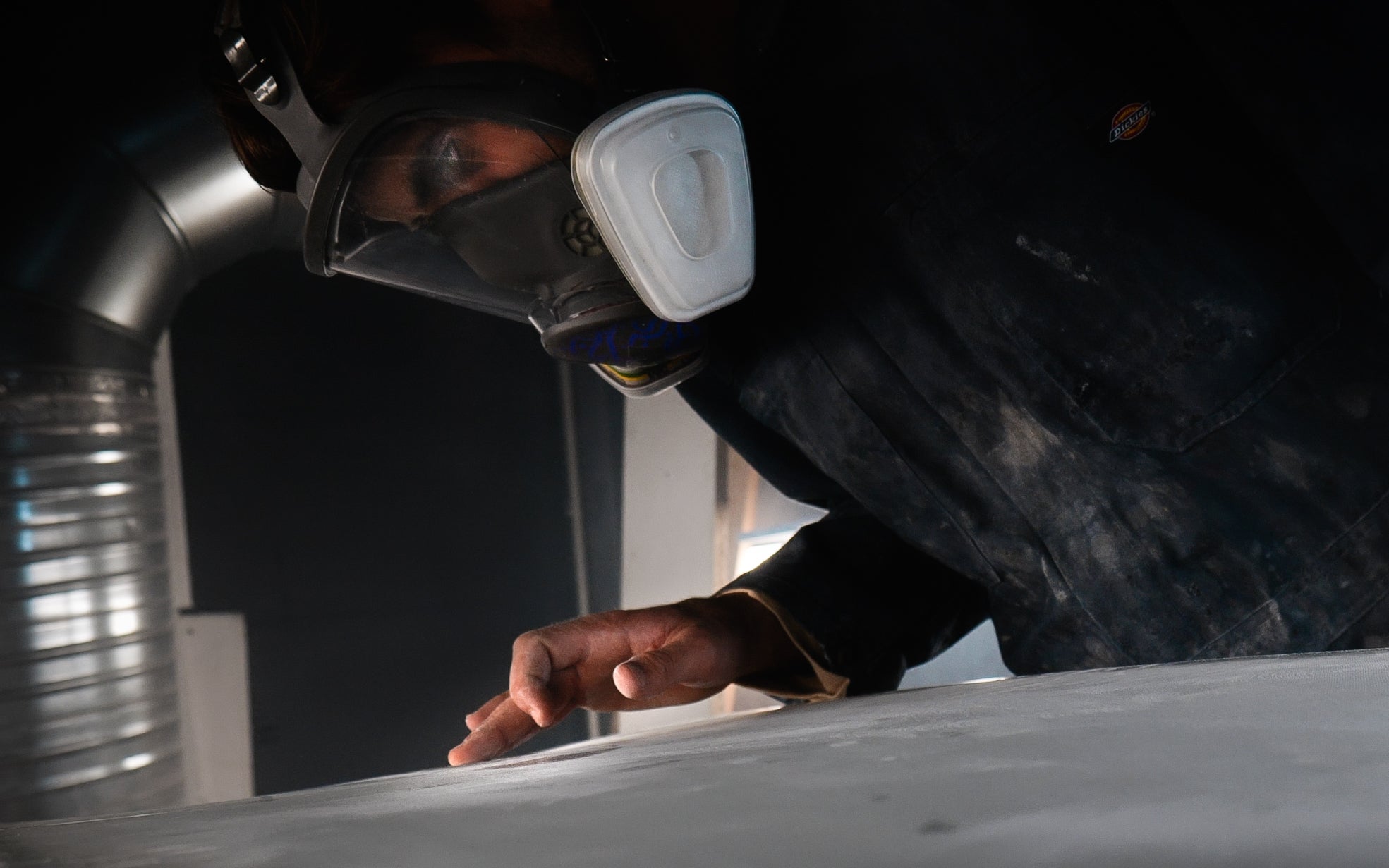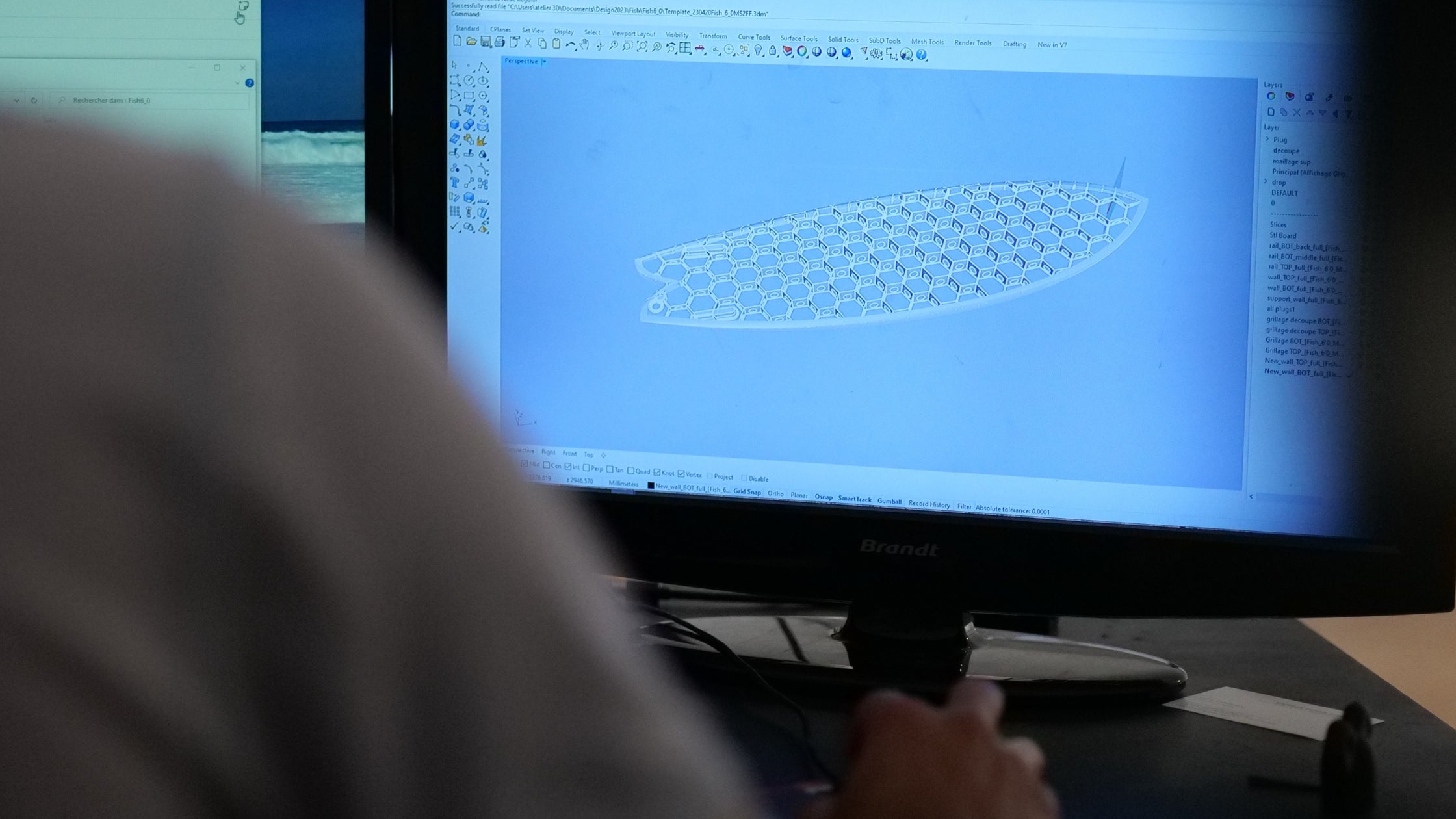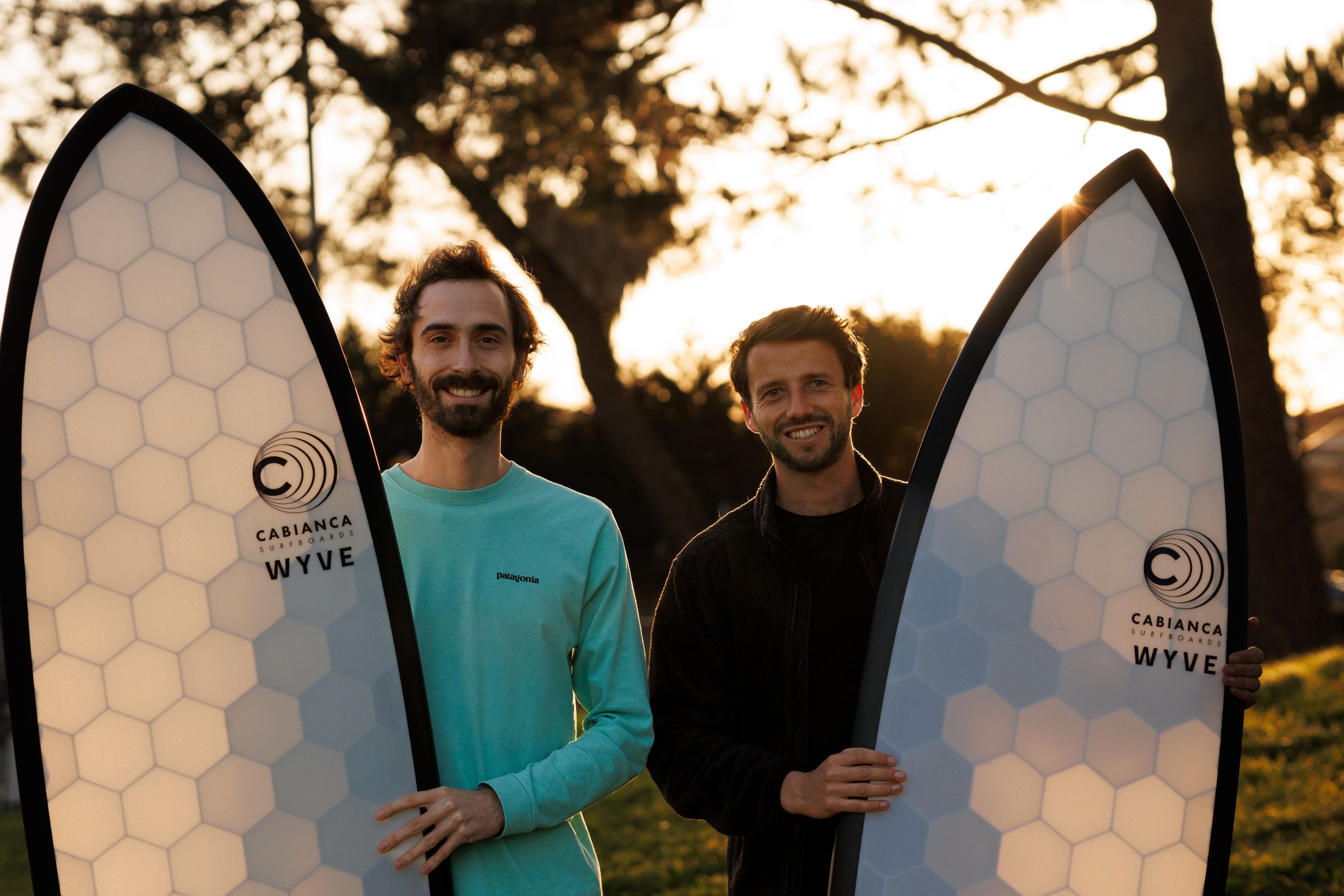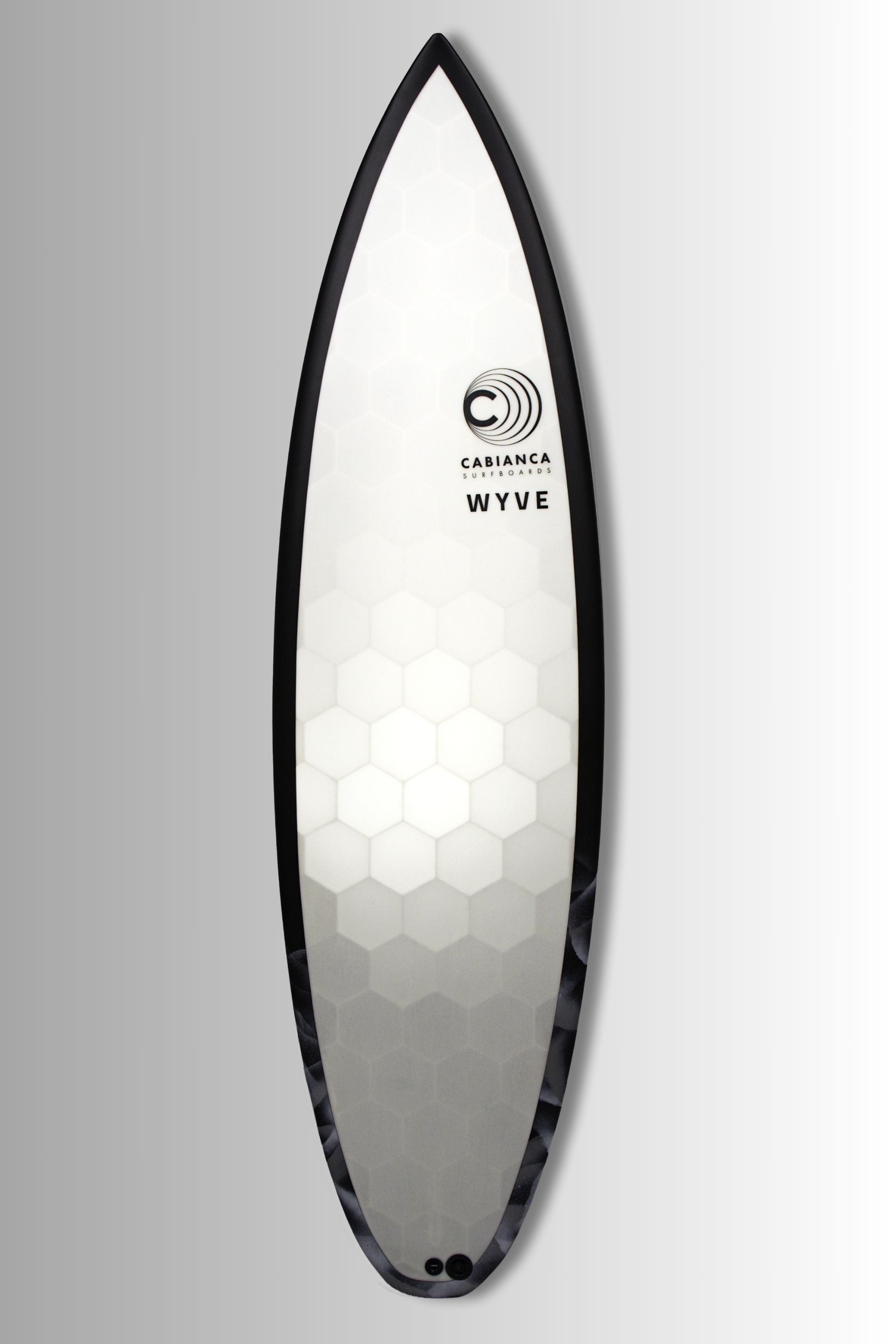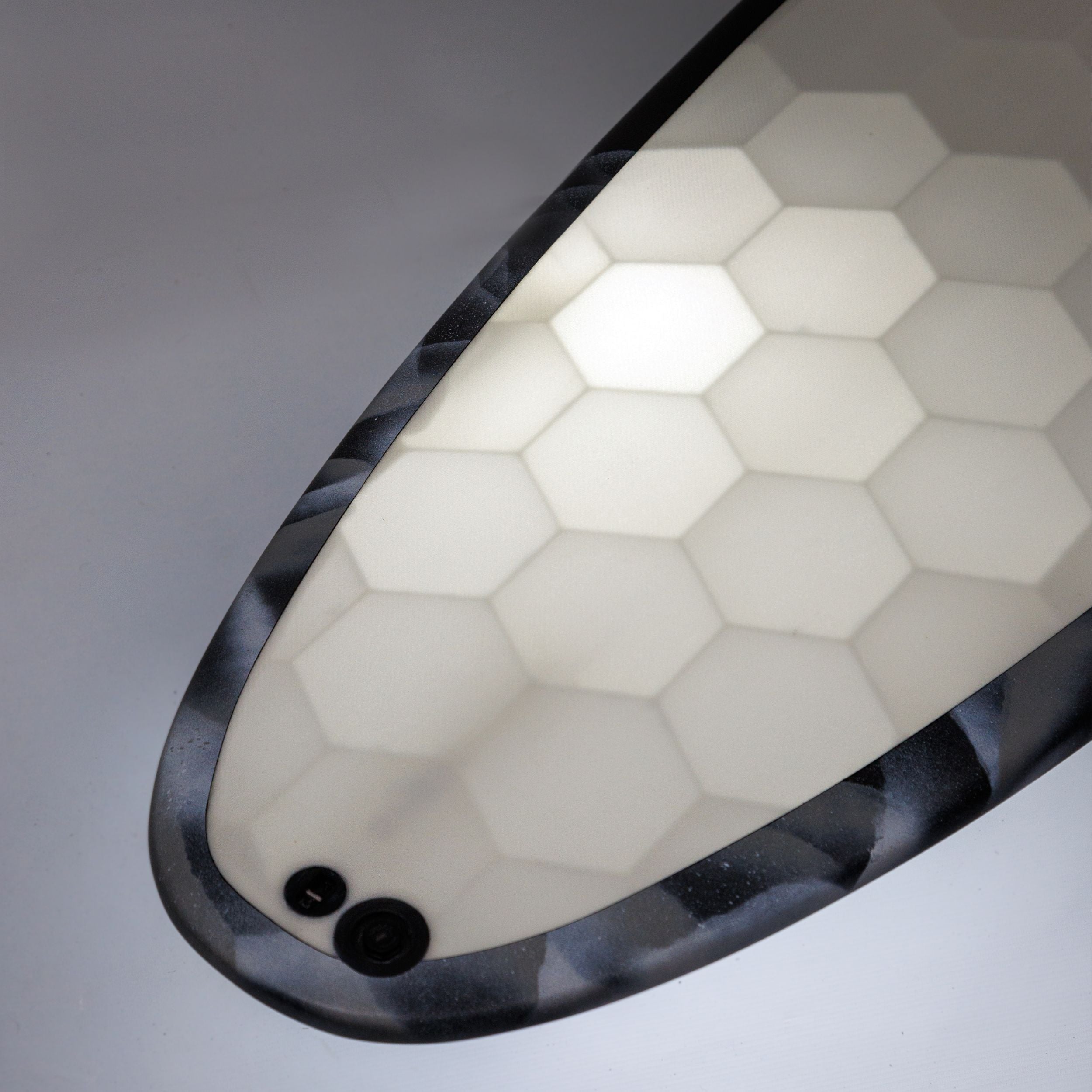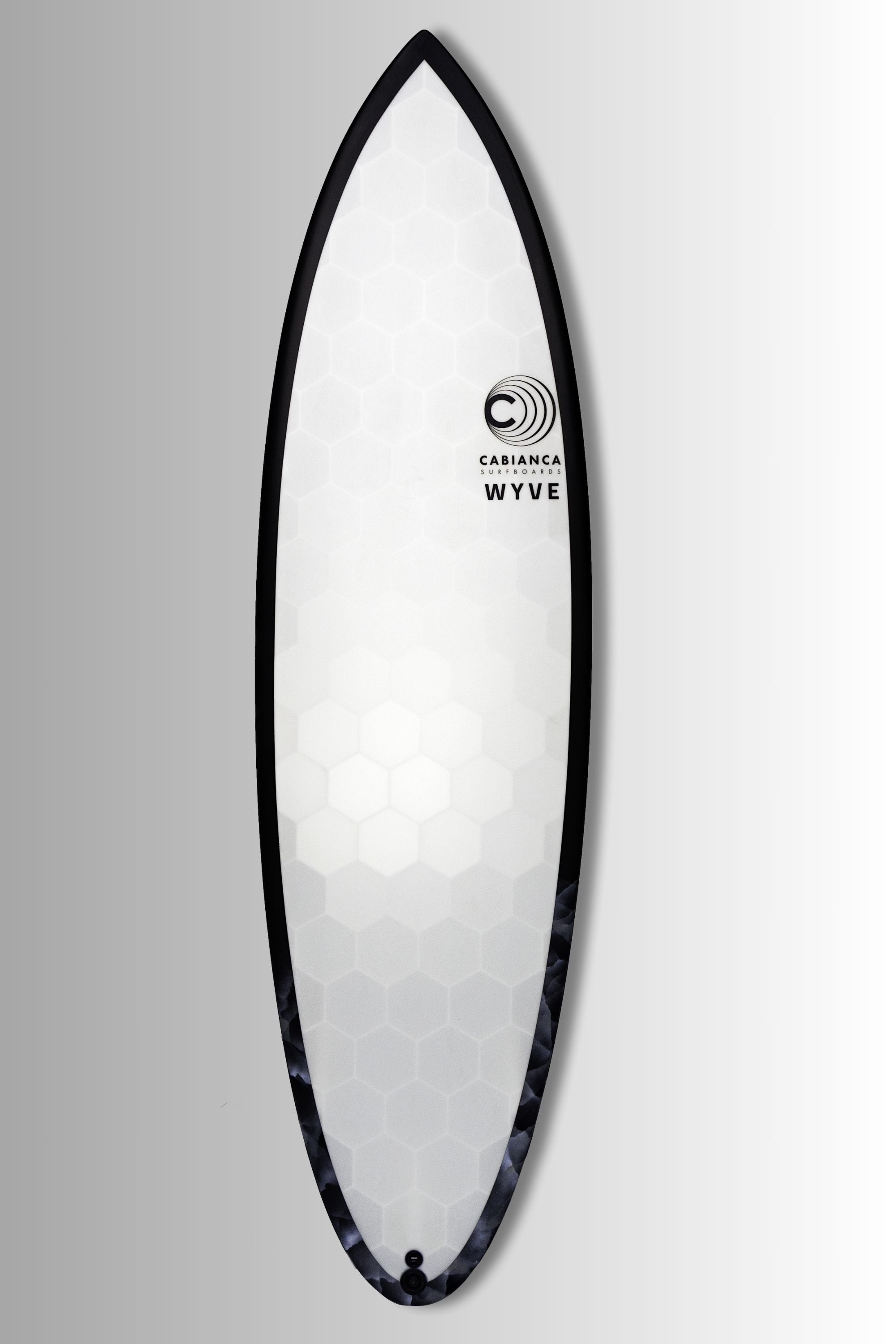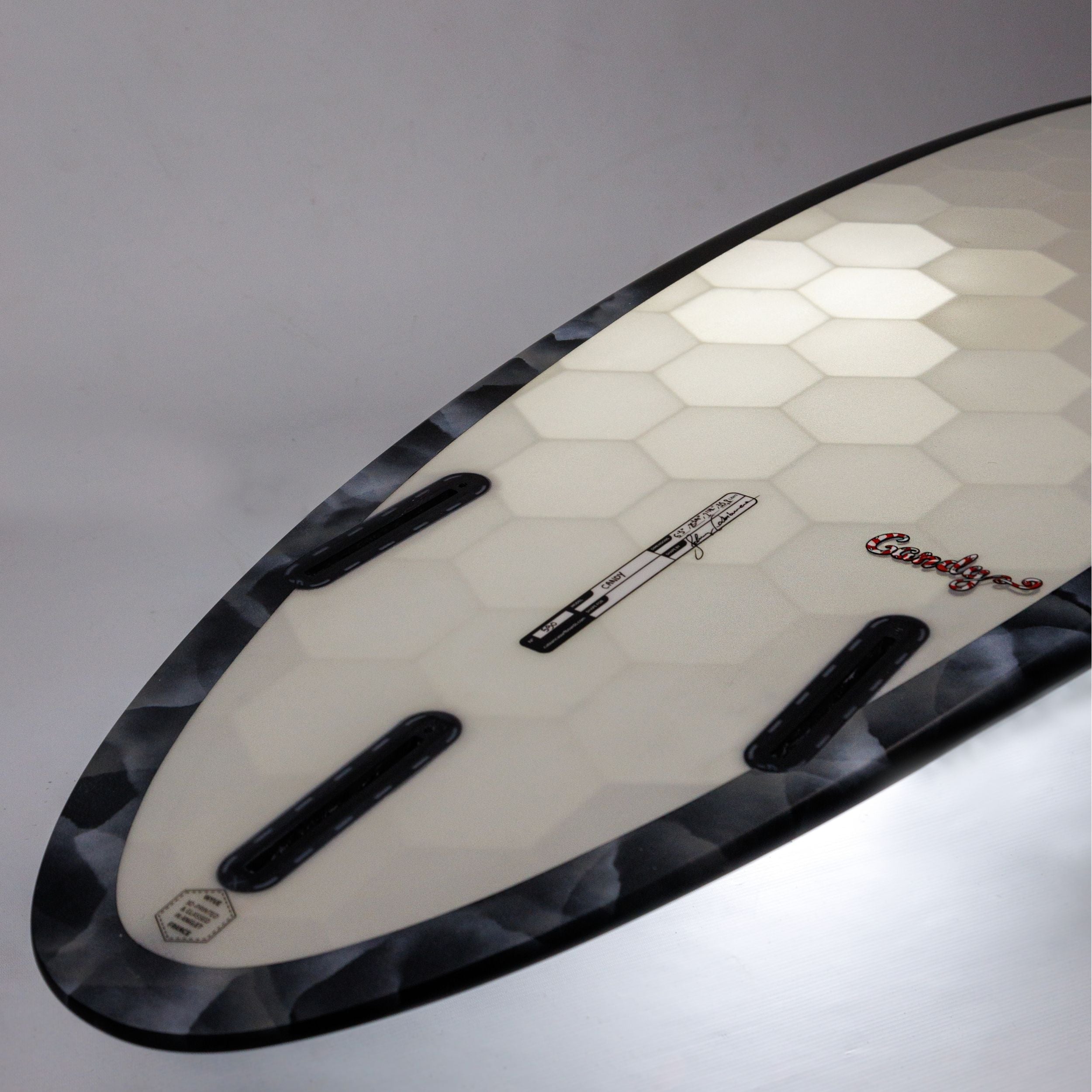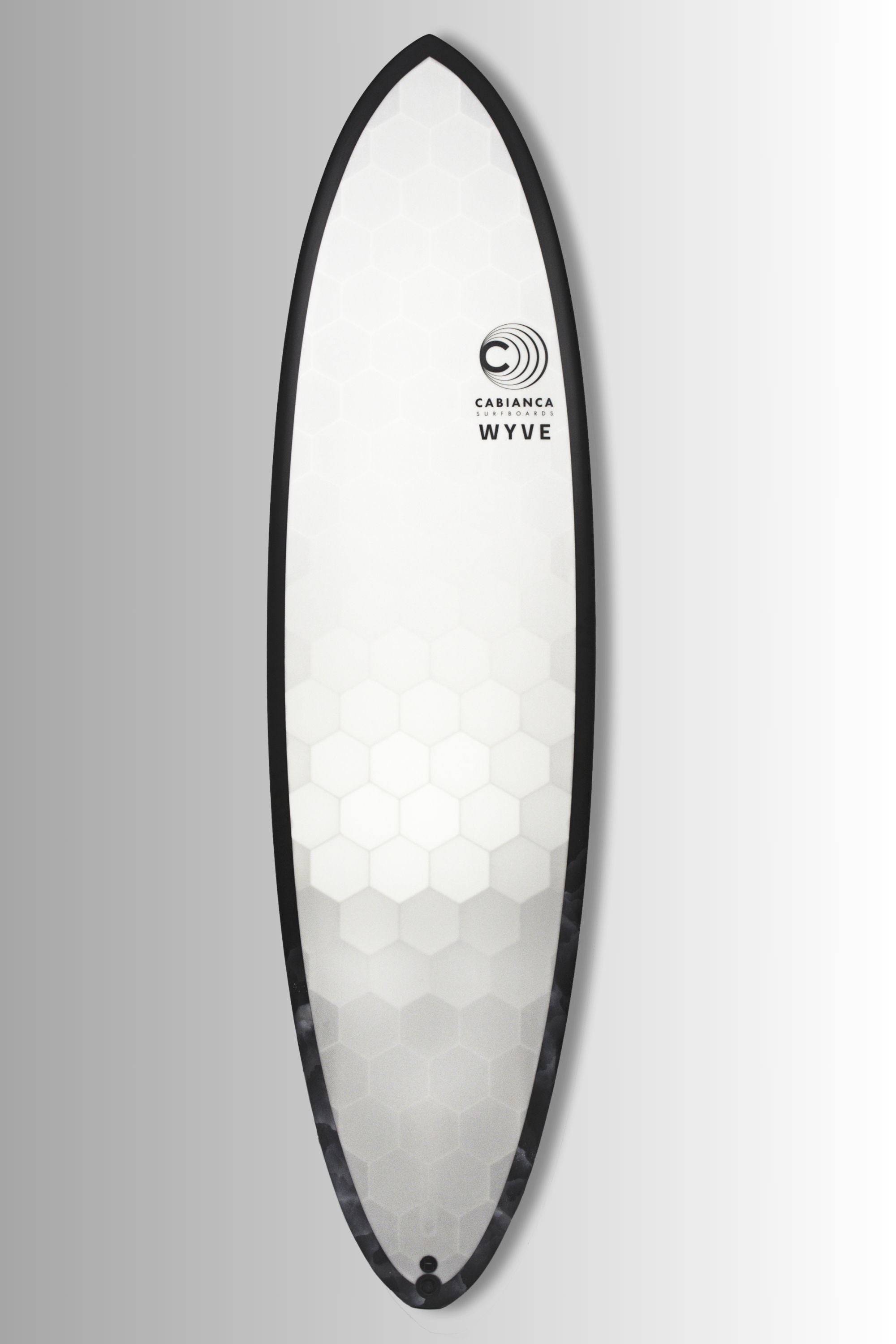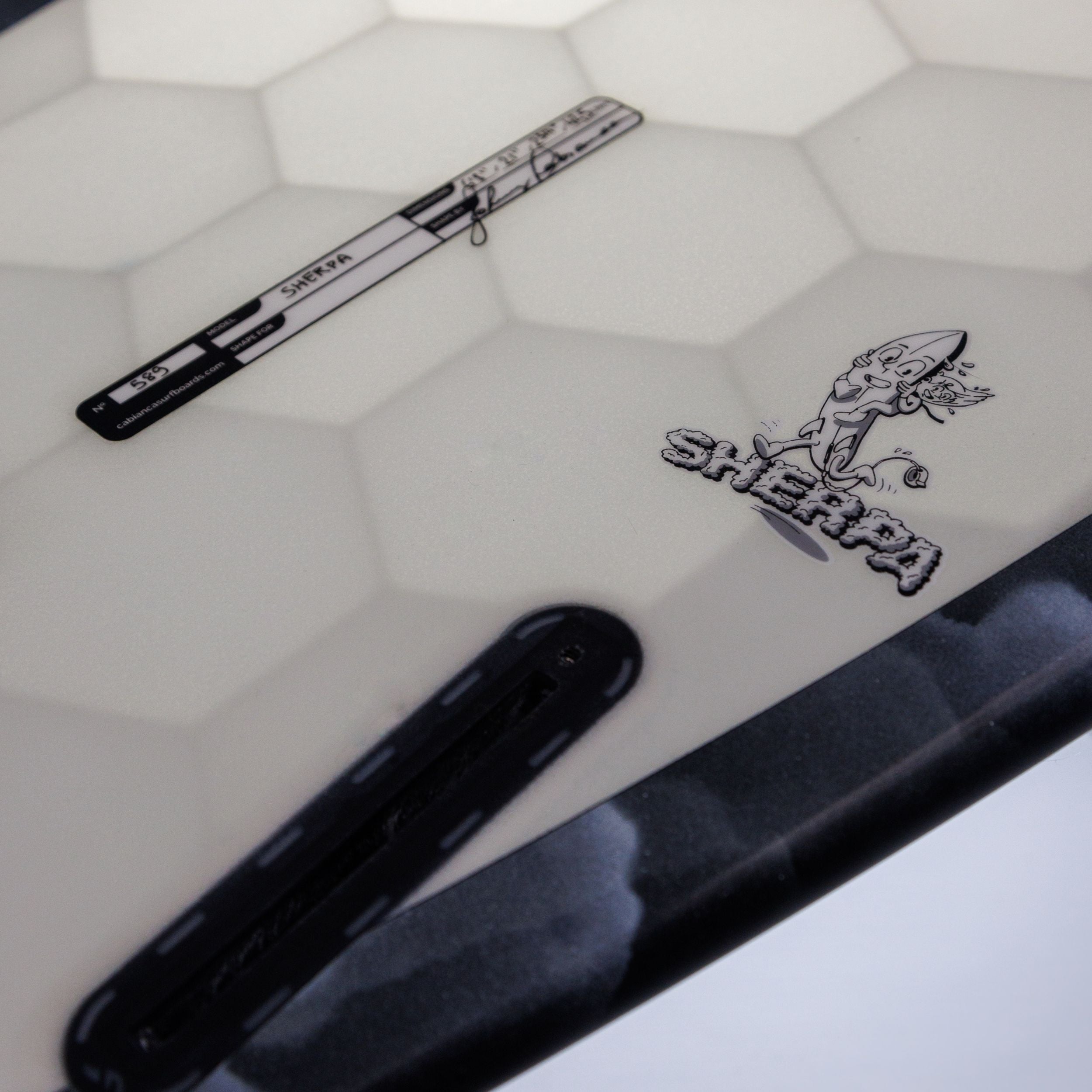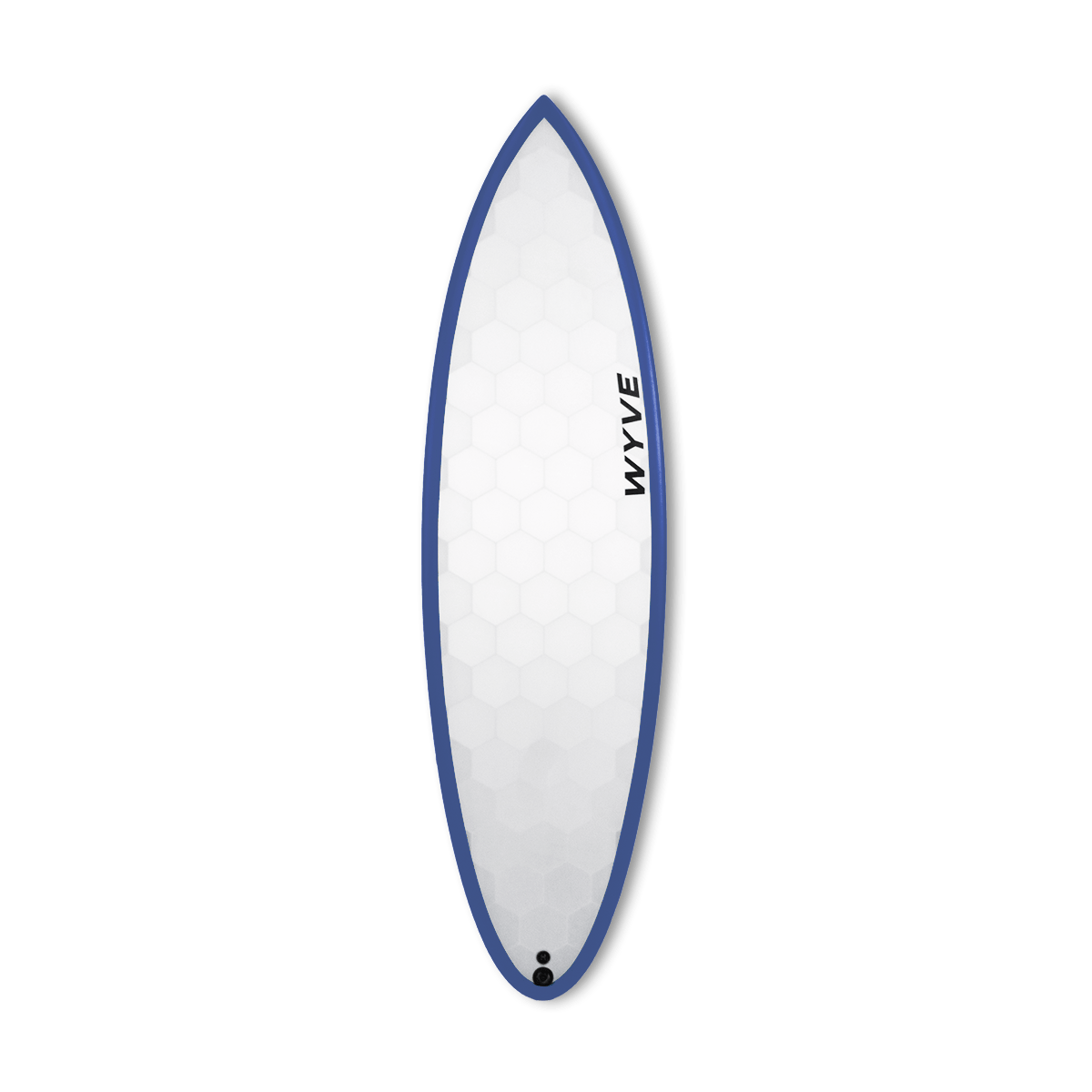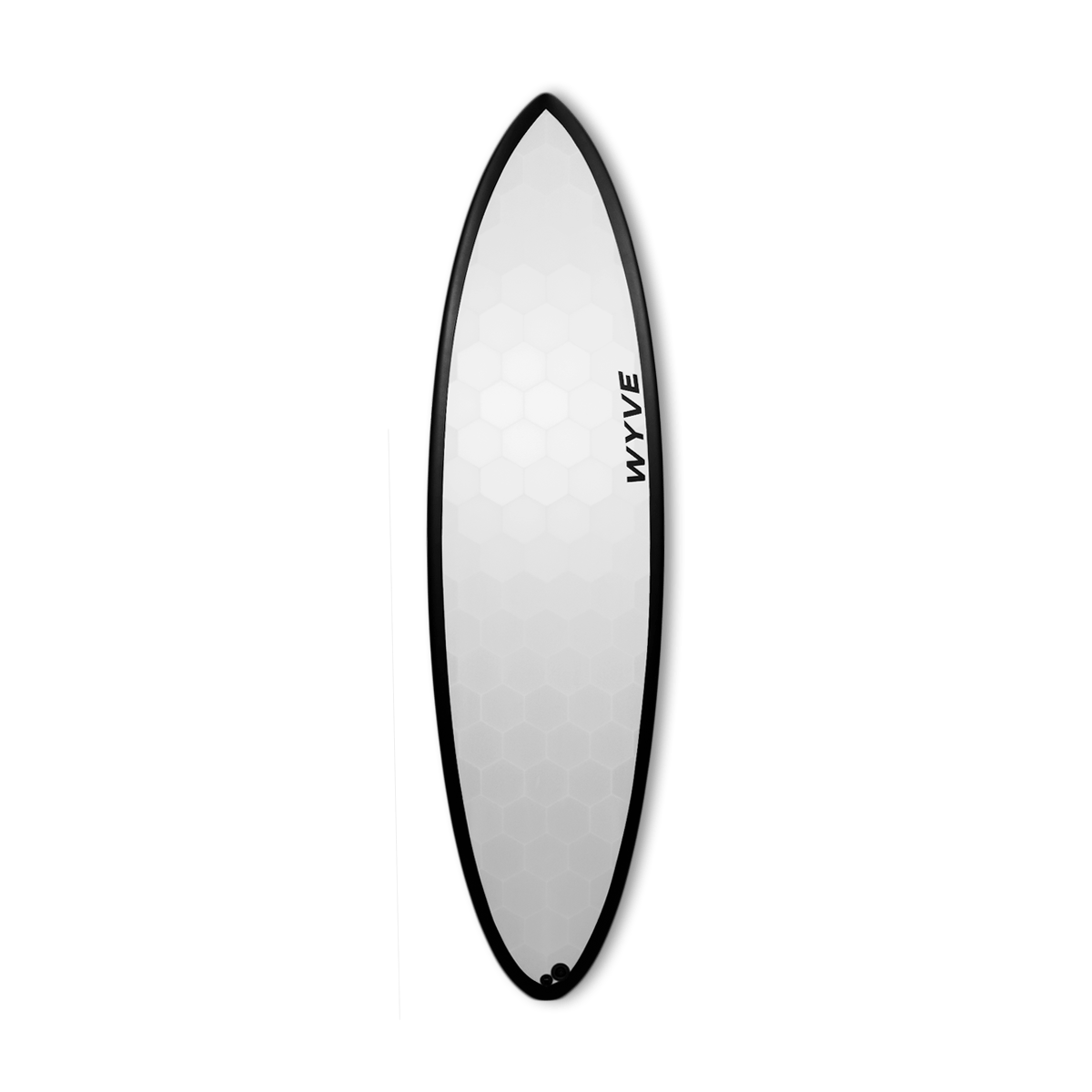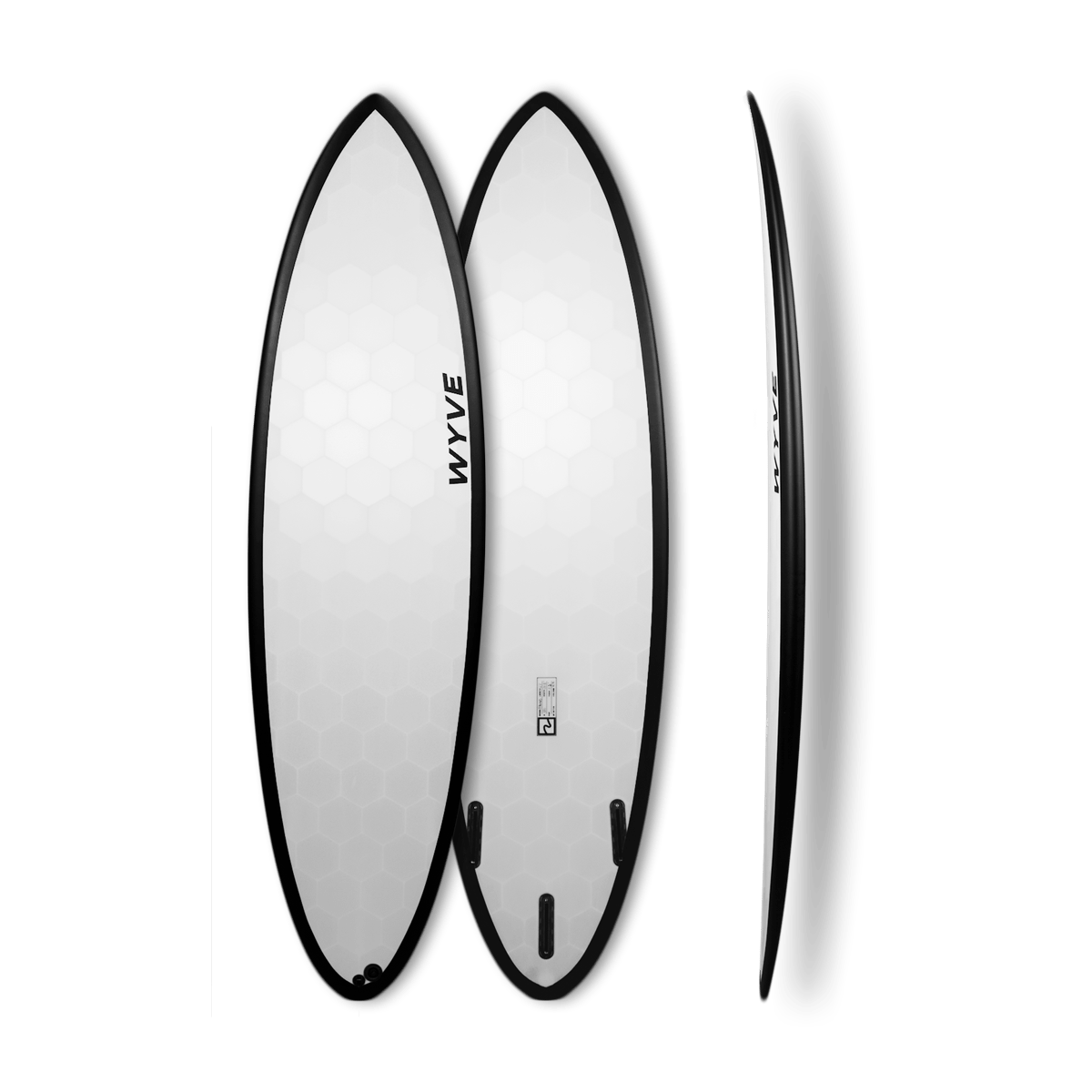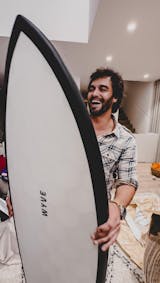Slice through mushy waves with effortless style. Carve graceful lines even when the surf goes flat. Unlock your creative expression while still laying rails with precision. The twin fin surfboard opens up an entirely new dimension for your quiver. Once an outlier reserved for retro enthusiasts or marginal days, the twin fin now claims legitimacy as a specialist board offering an alternative lens into your surfing progression.
For those seeking to push their boundaries beyond conventional thruster performance. Its smooth precision lends beautifully to flowing bottom turns directly linked into artistic cutbacks performed with delicate power. The right twin fin board serves as a quiver companion on those summer days.
Make no mistake, modern twin fin boards retain enough contemporary elements like continuous rockers, pinched rails, and updated fin configurations to still deliver tight snaps when the opportunity arises. It inhabits a unique niche, spanning timelessness with a progressive edge.
In this complete guide, we’ll uncover why twin fins have withstood the test of time and continually drawn devotees across generations of surfers. You’ll learn how to configure the ideal twin fin shape tailored exactly to your needs and local break.
We’ll demystify the many fin arrangements and outline varieties. Expect an in-depth look at the origins, benefits, ideal conditions, tail shapes, and performance attributes that make twin fins such a compelling – and quirky – option.

The Twin Fin Offers an Artistic Edge
For those seeking to diversify their repertoire beyond what shortboards provide, the twin fin delivers an artistic edge, allowing creative expression paired with small wave competency. It was born from retro roots focused on fluidity yet raised into the modern era through progressive refinements.
The twin fin surfboard ultimately occupies a unique niche spanning both timelessness and technical progression. It flourishes when ridden for artistic purpose rather than purely athletic endeavors. Approach it with an open mind and willingness to unlock unrealized potentials.
In doing so, you’ll likely discover new dimensions within your surfing – with the twin fin now claiming permanent residence in your quiver rotation.
A Brief History of Twin Fins
The origins of twin fin surfboards can be traced back to the 1940s when innovative shapers like Bob Simmons first utilized parallel twin keels on wider boards for increased control and projection.
However, it wasn’t until the late 1970s that the twin fin really took off through the pioneering work of legendary Australian surfer Mark Richards. Richards dominated the professional surfing scene between 1977-1981 with his refined twin fin designs that offered exceptional speed, fluidity, and maneuverability.
His boards proved ideally suited to the era's preferences for increased performance in smaller, weaker waves. The popularity of Richards’ twin shapes sparked widespread experiments blending retro twin elements with modern performance attributes.
What defines a Twin Fin Surfboard?
A twin fin surfboard is identified by its two fins set parallel along the rails without a center fin. But within this basic two-fin arrangement exists a diverse range of shapes and dimensions to match different wave conditions and riding abilities.
From retro fishes to performance hybrids, twin fins unite sleek, smooth rail-to-rail transitions with powerful trim speed. The lack of a third stabilizing fin gives them an inherently loose, slidey feel.
General advantages of Twins Fins Surf include:
- Exceptional speed and glide even in marginal surf
- Quick, controlled turns and releases
- Smooth, stylish carves and transitions
- Loose, free feel allowing creative expression
Downsides can include:
- Lacking control on bigger, steeper waves
- Prone to slip out when barrel or pocket riding
- Requires good rail technique and positioning
As a result, twin fins tend to be most popular among intermediate to advanced surfers seeking an alternative sensation in their quiver for small wave conditions.
What Tail Shapes Work Best?
The fish surfboard shape has formed the backbone of twin fin designs from Simmons and Richards' first boards up to now. This classic shape effortlessly balances retro styling with small wave performance.
Other popular options include:
- Swallowtails: Enhanced drive and looser feel
- Round pins: Smooth transitions with projection
- Square tails: Stable, balanced platform
Additionally, many hybrid boards now integrate elements of conventional shortboard tails for tighter, more dynamic turns. Overall, the tail shape impacts handling, so it’s worth matching to your skill level.
How Do You Configure the Twin Fins?
Two main fin options for twin fins exist, offering different feels:
Standard twin fins have a narrower, more upright profile extending deeper when set further back. This allows greater hold for more powerful carves.
Keel fins feature a wider swept-back shape for enhanced drive and speed. The additional fin area also lends greater stability for bigger waves.
Variable placement further alters characteristics:
- Set further up for a looser, more nimble feel
- Set further back for drawn-out slides and projection
Many hybrid boards also incorporate a tiny trailer fin for added grip during turns or in hollower waves.

Perfect Conditions for Twin Fins
Thanks to their fast cruising abilities, twin fins deliver their best performances in smaller swell conditions that lack steepness or power:
- Waist to chest high waves: Allows utilizing maneuverability
- Weak or onshore wind swells: Generates speed despite softness
- Slow rolling point breaks: Long walls suit sustained trim
- Dreamy open-faced waves: Ideal canvas for stylish lines
More experienced surfers can stretch their capabilities into overhead, slower moving waves as well. But avoid plunging too deep on late takeoffs as slipping out on the drop-in remains a hazard.
A Look at Modern Twin Fin Shapes
While classic retro proportions still dominate twin fin preferences, modern interpretations continue pushing dimensions to boost all-around wave abilities:
- Shorter lengths increase responsiveness
- Thinner profiles enhance rail technique
- Subtle rocker helps handle steeper faces
- Wider tail areas improve paddling out
Conditions-specific shapes have also emerged, including big wave guns, hybrid performance boards, grovellers optimized for micro waves, and longer mini mals for easy riding.

Who Should Ride a Twin Fin Surfboard?
Due to their looser feel, twin fins typically suit intermediate to advanced surfers looking to complement their standard thruster quiver. Benefits include:
-
Enhancing rail control and positioning
-
Allowing aerial maneuvers in mushier waves
-
Honing smooth transitions between turns
-
Generating speed without quality waves
However, most experts recommend sticking with longboards or mid-lengths during the beginner phase until basic wave riding skills solidify.
Once fundamental stepping stones like consistent pop ups, trimming, and angling get established, then twinnies make an excellent option for expanding your repertoire in mellower surf.

Buying Considerations When Choosing Your Twin Fin
As with any surfboard purchase, your ideal twin fin shape depends heavily upon:
-
Weight and height: Impacts needed volume, width, and thickness
-
Ability level: Determines if classic or modern dimensions work best
-
Predominant wave size: Governs length, rocker, and rails
-
Style preferences: Ranging from Cruising to aggressive
While often associated with fish shapes, the twin fin category now includes diverse boards for nearly every surfer. Keeping your individual needs and local break in mind allows matching ability to design.
Test different lengths, tails, fin configurations, volumes, rails, and foils until discovering your perfect blend of retro twin fin attributes merged with a modern high-performance edge.
Are Twin Fin Surfboards Right for You?
For surfers seeking to expand their repertoire beyond conventional shortboards, twin fins offer an avenue to artistic expression coupled with small wave competence. Their smooth precision lends well to flowing bottom turns linked to graceful cutbacks performed with precision power.
Twin fins retain enough modern performance elements like continuous rockers, pinched rails, and thruster-esque fin configurations to still deliver tight snaps when needed. Yet their retro soul shines through on stylish carves with enhanced glide.
The right twin fin serves as a quiver companion on those diminutive summer days, adding mileage to mediocre surf. When you need variation from your standard shortboard, set your sights on joining the twin fin movement.
Experience the Artistry of Twin Fin Surfing
If reading about the fluid styling and smooth precision of twin fins sparked your interest, view Wyve's hand-selected range showcasing the latest retro-influenced shapes.
Discover boards ideal for your ability level and home break. From hybrid performance models to old school fishes, find that perfect alternative feeling for your quiver.
View the Twin Fin Collection
Wyve's twin fins unite contemporary design with vintage soul for artistic expression even in mushy waves.



